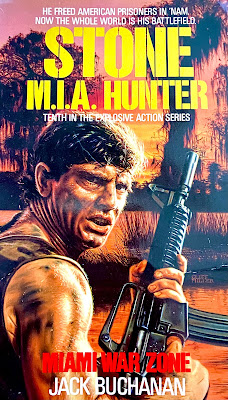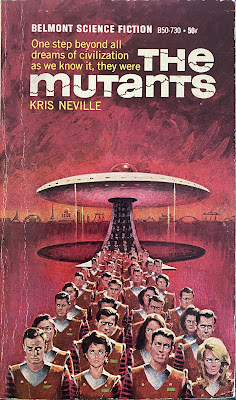Paperback Warrior generally offers two types of reviews. The first, and most common, is the experienced examination of a novel or a story based on a prior history with the author, book, or series title. For example, we can talk for miles about Mack Bolan, Matthew Scudder, or Quarry because we have a fondness for the character, authors, and series and have read a great deal on the subject. The second type of review is what I refer to as the discovery review. This is our writings and musings of a book, author, or genre that we don't have as much experience with. Our discovery is more of an emotional thing – how it affects us directly and the interest it creates in pursuing the author, future books, or related series titles. This review is pure discovery, prompted by our genuine love for the fanzines and articles compiled, edited, and written by Justin Marriott and his colleagues. Marriott is a literary scholar of paperbacks, comics, magazines, and pulps, all of the stuff we live and breathe here at PW. Normally, we try to refrain from discovery reviews, but even more so, we generally don't review books about books. It seems silly to review reviews, right? But, Marriott's newest endeavor, his second run of a series of books called Battling Britons, prompted me to learn more about British war comics. Honestly, I had never heard the term until I read about Marriott's series launch a year ago.
I ordered a copy of the newest issue of Battling Britons, number four, published in November, 2022. The theme for this issue is "Future War Special", covering a variety of war and science-fiction titles, comics, strips, and graphic novels. The only experience I've had with any British comics, sadly, is 2000AD character Judge Dredd. That's probably par for the course for snooty Americans like myself who solely dabble in the US branded comic companies like Marvel, DC, Dark Horse, Image, and Boom. In my defense, I only read books related to one title, X-Men. So, I'm a snoot among snoots I suppose.
My first impression is that Battling Britons is a 160 page book with a kick-ass glossy cover and design created by Paperback Warrior reader and fan Bill Cunningham. This guy does fantastic work with everything he touches (like the MAM Quarterly books) and this is no different. I would also speculate that Battling Britons might be Marriott's most professional fanzine, a well-structured book that maximizes each page size with an abundance of book covers, columns, articles, and a whopping amount of information on the subject. Granted, the interior pages are black and white, but the content and scope of the material more than make up for that small nuisance.
Here's the thing. I have no Earthly idea what some of these columns are referring to considering I know zilch about British comics. But damned if my interest isn't peaked, and my education a little better after reading through the book. Titles like Commando, Starblazer, Rogue Trooper/War Machine, and 2000AD look absolutely amazing and I found myself questioning my existence for 46 years around the sun without having this stuff in my life. Where have I been?
This series title offers eight regular columns and 14 features that are related to the "Future War" theme.
Highlights:
“A Brief History of Time (Travel in British Comics)”, is four pages about comics and story arcs featuring time travel in world war settings. Starlord 1977's strip “Timequake”, for example, features a bleak alternative future where the Germans prevailed in WW2. Another variation of that comes in the form of “The Sentinels”, featured in Misty 1977.
There are two articles with James Bacon discussing the reboot of Rogue Trooper, which was informative to me because I never knew about the first version. Now I know, and knowing is half the battle, right?
“Savage by Name, Savage by Nature” is six awesome pages featuring a look at Bill Savage, a character that appeared in the early issues of 2000AD. The character and premise sounds cool as Hell. A vigilante -esque guy, Savage, is fighting a force called the Volgan who have invaded England. Double-barreled shotguns and grimaced faces make this one look like a must have.
“Pocket Rockets” concerns the anthology comic book series Starblazer, which ran 281 issues from 1979 through 1991. The article is written by Alan Holloway and reviews 18 stories appearing in the series in the 1980s. These stories range from classic science-fiction, fantasy, sword and sorcery, and even space crime-noir. These write-ups and the issue cover art makes me want to retire and just read Starblazer all day.
Battling Britons was an unfamiliar, new journey for me, but one I'm glad I took. This was a resourceful, intelligent book about books designed in an easy to follow format. The amount of information collected on these British publications including titles, characters, history, writers, and industry was staggering. Justin Marriott continues to produce the best fanzines on the planet and Battling Britons continues his greatness. Recommended.
Buy a copy of this book HERE.






















